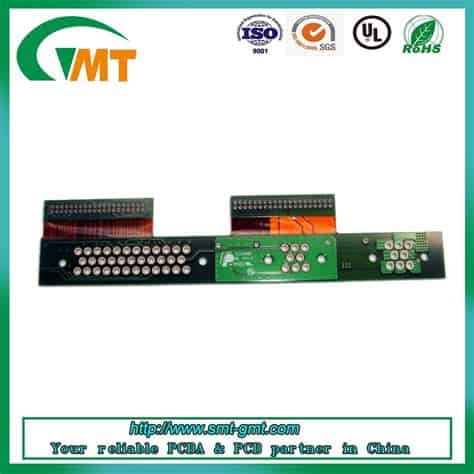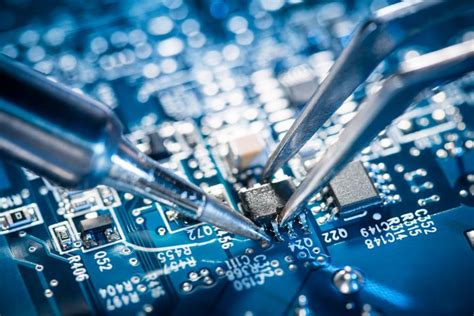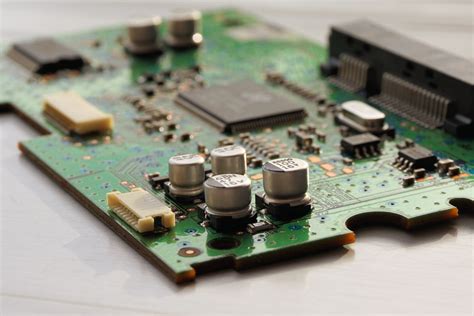Introduction to PCB Sourcing
Printed Circuit Board (PCB) sourcing is a crucial step in the electronics manufacturing process. It involves finding the right components, suppliers, and manufacturers to ensure the quality, reliability, and cost-effectiveness of your PCB project. In this comprehensive guide, we’ll walk you through the essential steps to successfully source your PCBs, electronic parts, and create a great Bill of Materials (BOM).
Key Aspects of PCB Sourcing
- Component Selection
- Supplier Evaluation
- Cost Optimization
- Lead Time Management
- Quality Assurance
Component Selection
Identifying the Right Components
When sourcing components for your PCB, it’s essential to identify the right parts that meet your design requirements. Consider the following factors:
- Functionality
- Performance
- Compatibility
- Size and Package
- Availability
Researching and Comparing Components
Once you have identified the required components, research and compare different options available in the market. Use reliable sources such as:
- Manufacturer Datasheets
- Online Component Distributors (e.g., Digi-Key, Mouser, Arrow)
- Engineering Forums and Communities
- Industry Publications and Blogs
Creating a Component List
Create a comprehensive list of all the components needed for your PCB project. Include the following details:
- Part Number
- Description
- Quantity
- Manufacturer
- Package Type
- Key Specifications
| Part Number | Description | Quantity | Manufacturer | Package Type | Key Specifications |
|---|---|---|---|---|---|
| XXXX-XXXX | Resistor | 100 | ABC Inc. | 0805 | 10kΩ, 1%, 1/8W |
| YYYY-YYYY | Capacitor | 50 | XYZ Corp. | 0603 | 10µF, 16V, X7R |

Supplier Evaluation
Identifying Potential Suppliers
Identify potential suppliers for your PCB components. Consider the following sources:
- Manufacturer Authorized Distributors
- Online Marketplaces (e.g., Alibaba, Global Sources)
- Local Electronics Stores
- PCB Manufacturing Partners
Evaluating Supplier Reliability
Evaluate the reliability of potential suppliers based on the following criteria:
- Reputation and Market Presence
- Quality Certifications (e.g., ISO, RoHS)
- Customer Reviews and Feedback
- Technical Support and Service
Comparing Supplier Quotes
Obtain quotes from multiple suppliers and compare them based on the following factors:
- Unit Price
- Minimum Order Quantity (MOQ)
- Shipping Costs
- Lead Time
- Payment Terms
| Supplier | Unit Price | MOQ | Shipping Costs | Lead Time | Payment Terms |
|---|---|---|---|---|---|
| Supplier A | $0.10 | 1000 | $50 | 2 weeks | Net 30 |
| Supplier B | $0.12 | 500 | $30 | 1 week | Prepaid |

Cost Optimization
Negotiating Prices
Negotiate prices with suppliers to obtain the best possible deal. Consider the following strategies:
- Volume Discounts
- Long-Term Contracts
- Blanket Purchase Orders
- Bundling Components
Optimizing BOM for Cost Reduction
Optimize your Bill of Materials (BOM) to reduce costs without compromising quality. Consider the following techniques:
- Alternative Components
- Standardization
- Value Engineering
- Inventory Management
Total Cost of Ownership (TCO) Analysis
Conduct a Total Cost of Ownership (TCO) analysis to evaluate the long-term cost implications of your sourcing decisions. Consider factors such as:
- Initial Purchase Price
- Inventory Carrying Costs
- Maintenance and Repair Costs
- End-of-Life (EOL) Management

Lead Time Management
Understanding Lead Times
Understand the lead times associated with each component and supplier. Lead times can vary based on:
- Component Availability
- Manufacturing Capacity
- Shipping and Logistics
- Customs and Regulations
Forecasting and Planning
Forecast your component requirements and plan your sourcing activities accordingly. Consider the following strategies:
- Demand Planning
- Safety Stock
- Consignment Inventory
- Just-in-Time (JIT) Delivery
Expediting and Shortage Management
Establish processes to handle expediting and shortage situations. Consider the following steps:
- Regular Supplier Communication
- Alternative Sourcing Options
- Inventory Reallocation
- Design Modifications
Quality Assurance
Defining Quality Requirements
Define clear quality requirements for your PCB components and communicate them to your suppliers. Consider factors such as:
- Tolerance and Accuracy
- Reliability and Durability
- Compliance with Standards (e.g., IPC, MIL-STD)
- Traceability and Certification
Implementing Quality Control Measures
Implement quality control measures to ensure the consistency and reliability of your PCB components. Consider the following techniques:
- Incoming Inspection
- Supplier Audits
- Statistical Process Control (SPC)
- Failure Analysis and Corrective Action
Continuous Improvement
Foster a culture of continuous improvement in your PCB sourcing process. Regularly review and optimize your sourcing strategies based on:
- Performance Metrics
- Supplier Feedback
- Industry Best Practices
- Emerging Technologies
Frequently Asked Questions (FAQ)
1. How do I find reliable suppliers for my PCB components?
To find reliable suppliers for your PCB components, consider the following steps:
- Research and compare potential suppliers based on their reputation, quality certifications, and customer reviews.
- Seek recommendations from industry peers, forums, and professional networks.
- Attend trade shows and exhibitions to meet suppliers in person and evaluate their offerings.
- Request samples and conduct thorough testing and evaluation before committing to a supplier.
2. What should I consider when creating a Bill of Materials (BOM) for my PCB project?
When creating a BOM for your PCB project, consider the following factors:
- Include all necessary components, their quantities, and specifications.
- Use consistent and clear part numbering and descriptions.
- Specify the manufacturer, package type, and any critical parameters.
- Include alternative components, if applicable, to mitigate potential supply chain risks.
- Review and update the BOM regularly to ensure accuracy and alignment with the latest design changes.
3. How can I optimize my PCB sourcing for cost reduction?
To optimize your PCB sourcing for cost reduction, consider the following strategies:
- Negotiate prices with suppliers based on volume, long-term contracts, or bundling opportunities.
- Evaluate alternative components that offer similar functionality at a lower cost.
- Standardize components across multiple designs to leverage economies of scale.
- Implement value engineering techniques to identify cost-saving opportunities without compromising quality.
- Optimize inventory management to minimize carrying costs and obsolescence risks.
4. What are the key considerations for managing lead times in PCB sourcing?
When managing lead times in PCB sourcing, consider the following key considerations:
- Understand the lead times associated with each component and supplier.
- Forecast demand accurately and place orders well in advance to account for lead times.
- Maintain safety stock or consider consignment inventory arrangements to buffer against supply chain disruptions.
- Regularly communicate with suppliers to stay updated on lead time changes and potential delays.
- Establish contingency plans and alternative sourcing options to mitigate the impact of lead time extensions.
5. How can I ensure the quality of my PCB components?
To ensure the quality of your PCB components, consider the following measures:
- Define clear quality requirements and communicate them to your suppliers.
- Implement incoming inspection procedures to verify the conformance of received components.
- Conduct regular supplier audits to assess their quality management systems and processes.
- Utilize statistical process control (SPC) techniques to monitor and control the quality of incoming components.
- Establish a robust failure analysis and corrective action process to identify and address quality issues promptly.
Conclusion
Successfully sourcing your PCBs and electronic parts requires a systematic approach that encompasses component selection, supplier evaluation, cost optimization, lead time management, and quality assurance. By following the guidelines and best practices outlined in this article, you can create a great BOM, establish reliable supplier relationships, and ensure the success of your PCB projects.
Remember to continuously monitor and optimize your sourcing strategies to adapt to the ever-changing market dynamics and technological advancements. By staying proactive and agile in your sourcing approach, you can maintain a competitive edge and deliver high-quality PCB products to your customers.

No responses yet